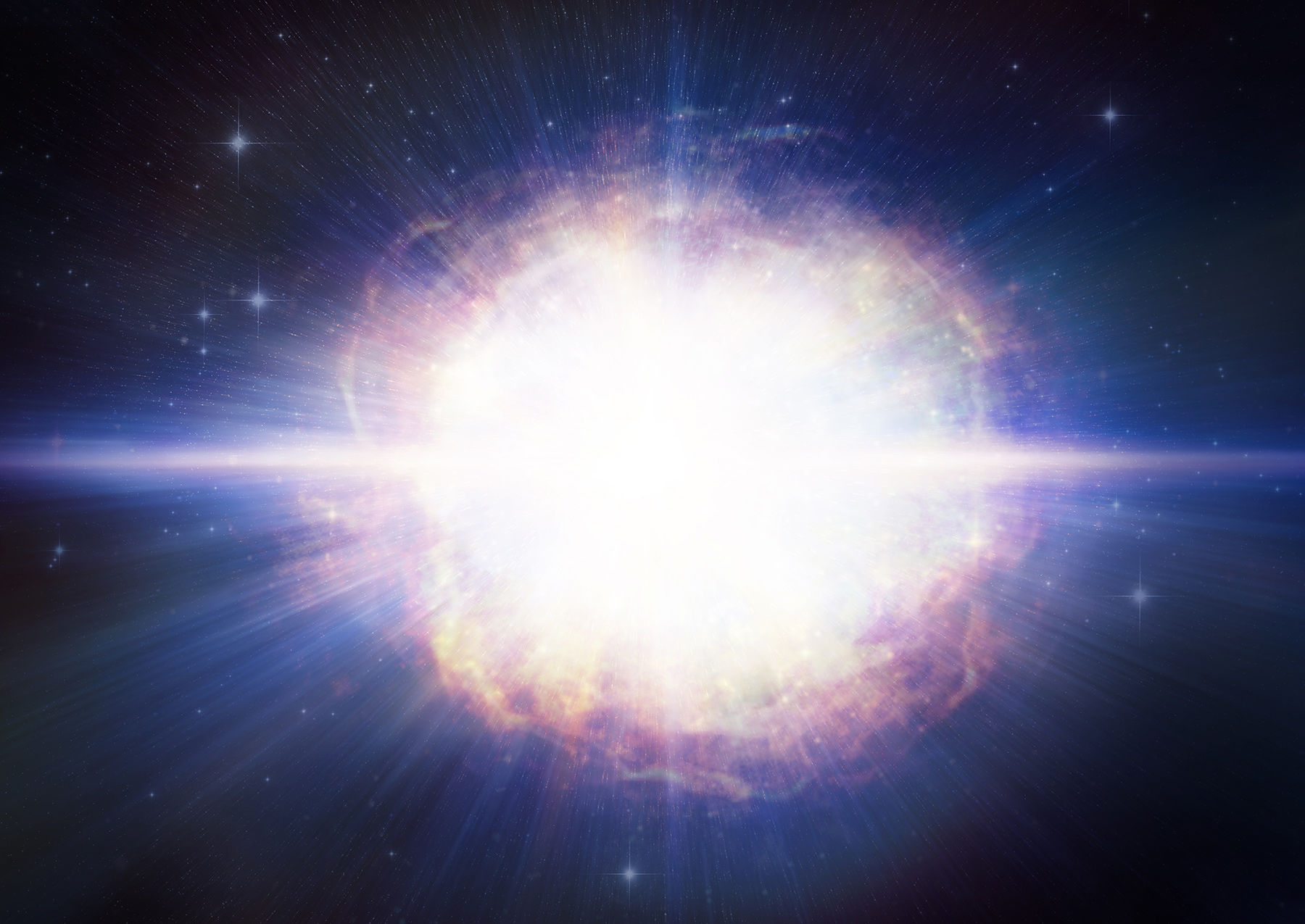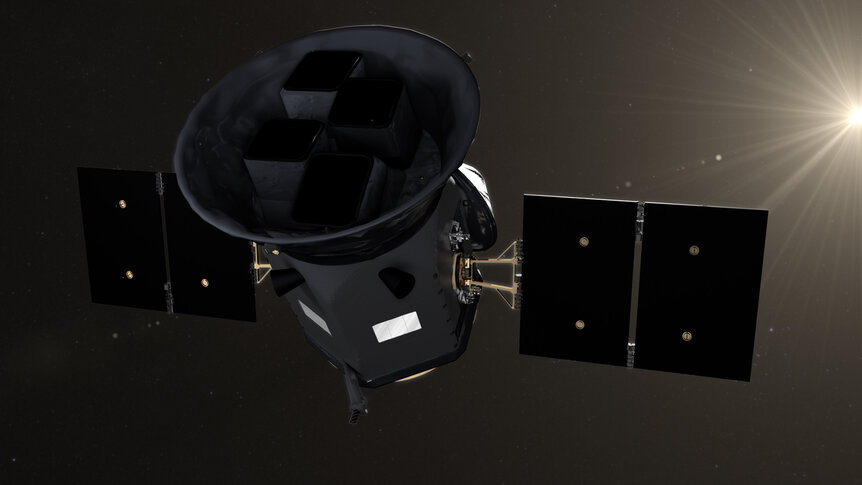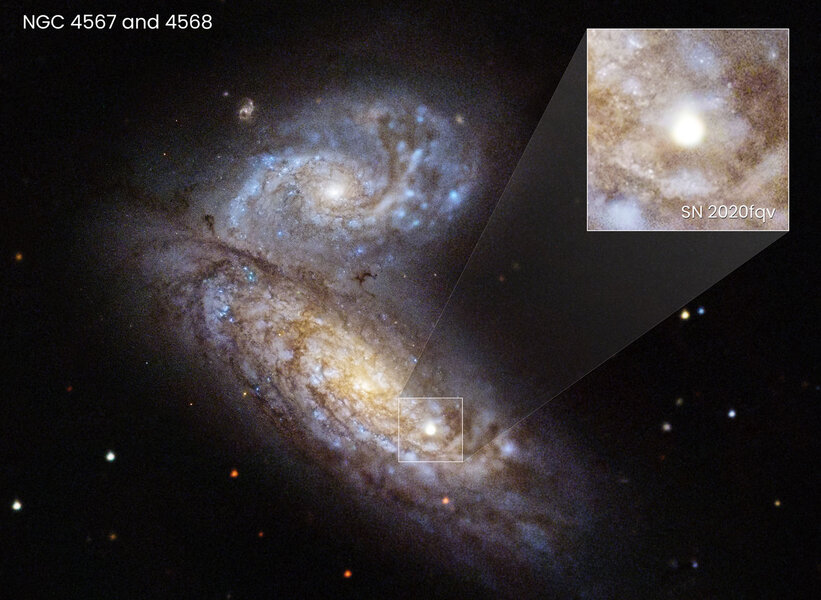Create a free profile to get unlimited access to exclusive videos, sweepstakes, and more!
The last days of a massive star before it went supernova
Hubble and TESS observations reveal the last few days of a star's life.

A supernova does not go gently into that good night.
Oh my no, it rages. And it does so even before it explodes in one of the most titanic events in the cosmos.
The problem is, we're not exactly sure how it rages. We know that some exploding stars have material around them (called the circumstellar medium) but how much and how the star ejects it can be difficult to pin down. Now, thanks to the relatively nearby supernova SN 2020fqv — and some seriously rapid response by a team of astronomers — we can see that right before it blew, it had a ridiculously powerful paroxysm.
SN 2020fqv is what's called a core collapse (or Type II) supernova, a massive star that ran out of nuclear fuel, causing the core to collapse, a vast amount of energy to be released, and the extraordinarily violent blast wave ripping the outer layers off the star and flinging them away at a decent fraction of the speed of light.
Thousands of such supernovae are now detected every year, but this one was special. Very special. For one thing, it happened in NGC 4568, a galaxy in the Virgo Cluster, a collection of thousands of galaxies bound by their own gravity. It's only about 60 million light years from us, which is very close on a cosmic scale.
For another, this just so happened to be a spot on the sky that was, at the time, being observed by TESS, the Transiting Exoplanet Survey Satellite. TESS looks for planets around other stars by carefully monitoring the light from millions of stars, looking for a dip in brightness that reveals a planet passing in front of it in a kind of mini-eclipse. It scans the same sector of the sky over and over, and doesn't distinguish between bright stars and galaxies.
Because TESS measures the brightness of a given object in a cadence of 30 minutes (in this case) it actually detected the sudden brightening of the exploding star, even though it was in another galaxy. The supernova was actually first detected on April 1, 2020 by the wonderful Zwicky Transient Facility, a ground-based telescope that also surveys the skies looking for objects changing brightness. But it doesn't take a rapid series of images, and that's the beauty of the TESS observations: It showed the very early stages of the explosion.
Once the explosion was confirmed, a team of scientists pounced on it. This part truly amazed me: In less than an hour after the supernova was IDed to be a core collapse, the astronomers had contacted the Space Telescope Science Institute (responsible for Hubble Space Telescope operations) and told them they were going to trigger a clause in an already-accepted proposal to try to capture observations of a nearby core collapse supernova as quickly as possible.
Two and a half hours later the updated observing plan proposal was submitted, and within a half hour after that the ultra-rapid "Target of Opportunity" was submitted. Then — and this is stunning to me — Hubble started observing this explosion just 32 hours later, a mere 79 hours (3.3 days) after the discovery! Mind you, Hubble usually takes around 2 weeks to be pointed anywhere, though there have been occasions it's been faster. So getting observations in only a day and a third is fantastic work from everyone involved.
That rapidity is crucial. When the star explodes, the outer layers are expelled at extreme speed. If there's any stuff out there around the star, this wave of several octillion tons of stellar matter is going to catch up to it in just a few days. The circumstellar medium will get lit up when this expanding debris slams into it, and having observations of that can reveal how much material there is, how dense it is, how the density of it changes with distance, and more.
And in this case, it worked. Looking at TESS and Hubble data (including observations of these galaxies taken long before the supernova erupted, as well as observations from other observatories) the astronomers were able to piece together the likely layout of matter around the supernova. And that in turn told them of the last days of this star...
It was probably born as a star 13.5 to 15 times the mass of the Sun. That's pretty hefty. Stars like that fuse hydrogen into helium for millions of years to produce energy, then fuse helium into carbon and oxygen when the hydrogen runs out, then carbon into neon, then neon into magnesium... each stage runs much hotter and faster, taking less time than the previous one. By the time the core is silicon, it will fuse the entire core — with the mass of the Sun or so — into iron in a single day. At that point the core cannot fuse iron into anything heavier without absorbing energy, which is needed to hold the core up. The core collapses, and kaboom.
Generally speaking, the outer layers may not change a whole lot during this time, with all the action happening deep below. But the star can blow a wind of material away, destined to become the circumstellar medium, at a rate of very roughly a millionth the mass of the Sun per year (that's about one-third the Earth's mass per year). However, looking at how SN 2020fqv brightened, the astronomers calculate that around one year before it blew the star ejected a staggering 0.23 solar masses of material into space! That's a huge rate — 200 times the mass of the Earth every day — and likely due to unstable fusion of oxygen in the star's core which dumped huge amounts of energy into the outer layers, vastly increasing the wind.
This material didn't get very far before the star exploded, and again was only possible to detect because of the incredible response speed of the team.
The supernova debris wave slammed into all that junk and lit it up. There was so much stuff that it stayed at a roughly constant brightness for about 114 days; we call a supernova like this a Type II-P, "P" for "plateau," meaning the brightness remained steady for a long time.
How bright was it? Given its distance and how bright it appears, the astronomers measure that it was about a billion times brighter than the Sun. A billion. Every second of every day for nearly 4 months.
Raging.
We don't really have a good grasp on what a massive star like this does shortly before it blows, or how this affects the subsequent supernova. Now that they've shown that extremely rapid response times can pay off, I expect we'll see more observations like this. And when we do, we'll learn what these powerhouse stars do as they age, burning and raving at the close of the day.




























